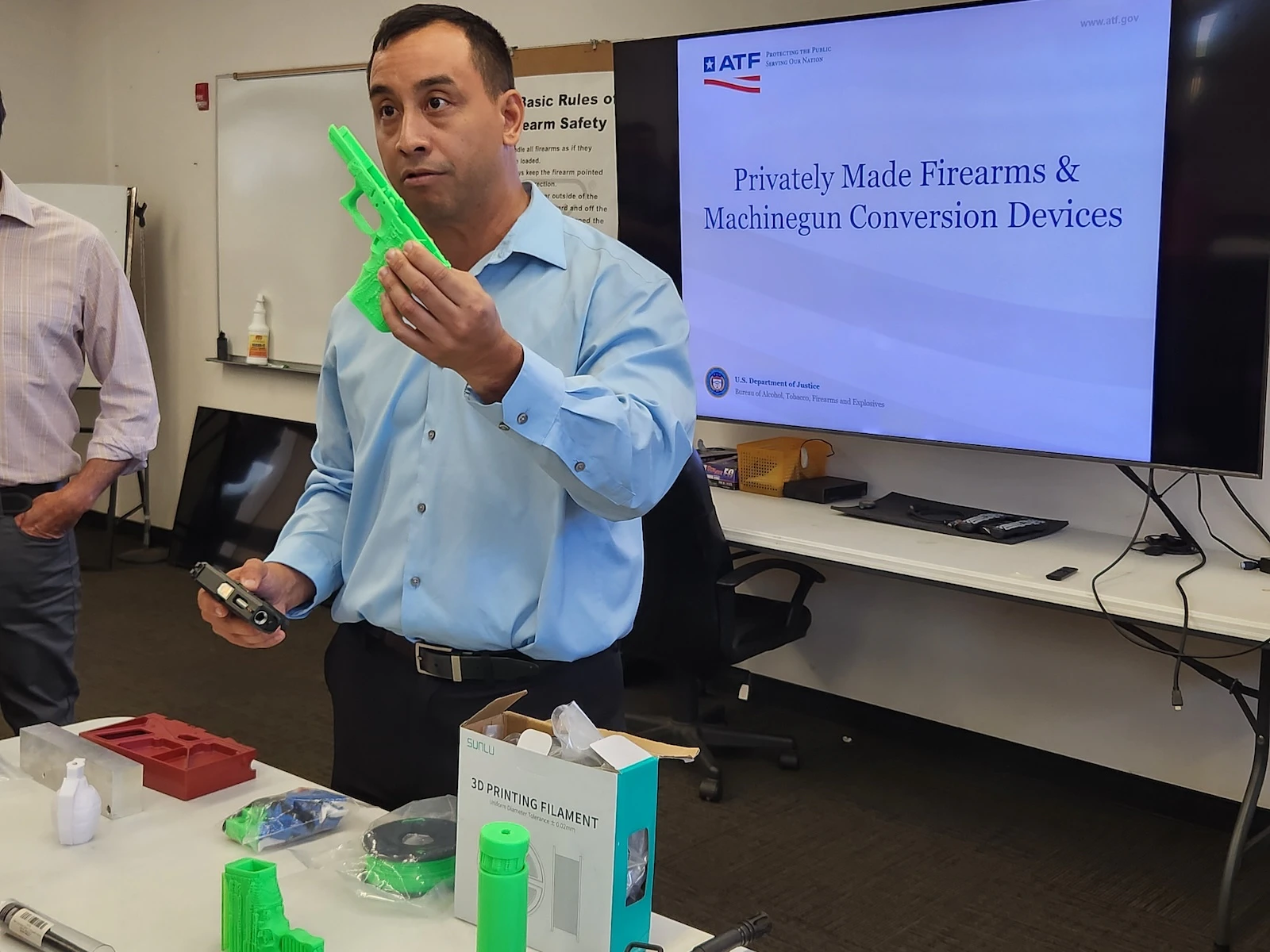A Hawai‘i lawmaker is going to war against "ghost guns."
U.S. Rep. Jill Tokuda (D), announced May 12 that she will introduce a measure in Congress to help law enforcement agencies crack down against guns that have not been imprinted with a federally licensed serial number, referred to as ghost guns by policymakers.
The Gun Hardware Oversight and Shipping Act, or GHOST Act, will allow law enforcement to collect and track data about the sale of certain firearm components that can be combined with 3D-printed components to create a functioning weapon.
"There are parts online that you can buy right now, but put together, they make a weapon of destruction," Tokuda said at a news conference Monday at HPD's Ke Kula Maka‘i police academy in Waipahu.
Tokuda demonstrated with a handgun that was almost entirely constructed out of 3d-printed plastic. Only the slide and barrel were legitimately manufactured gun components, she said, but because they could be purchased freely without any need for a registration, anyone with access to a 3D printer can print a gun using easily downloadable plans, order a slide and barrel, and put the two together to create a fully functional gun.
Honolulu Police Chief Arthur Logan said that people can also 3D print tiny components that may seem innocuous but can be inserted into a Glock pistol to make it fully automatic, for example. The 3D printer used during Monday’s demonstration, Logan said, was legitimately owned by a minor who uses it to produce simple toys but can just as easily be used for gun parts.
Mike Lambert, Director of the state Department of Law Enforcement, said 3D-printed guns can look nigh-indistinguishable from legitimate guns at a glance, although he added that some users prefer to wield ghost guns made of brightly colored plastic, "because they're proud of its quality."

Depending on the printer and the material used, a 3D-printed gun can fire thousands of rounds without breaking, Lambert said.
Logan said that HPD began tracking numbers of ghost guns recovered from suspects only two years ago, but even in such a short time, the number of cases has risen precipitously, although he did not provide specific numbers.
Logan asserted there are an estimated 500,000 unregistered firearms in the state, but Lambert said that police can't even take a guess at how many ghost guns are in the state right now, because there is no way for agencies to track the parts that can be used to make them.
"So what [the GHOST Act] would look like is that law enforcement receive a list," Lambert said. "We're seeing, you know, 10 kits that have been received by an individual, but they have no registered firearms, or they're a felon, right? Those type of, that type of information, can create a red flag for us."
Logan said legal, registered firearm owners should still be able to order gun components without extra scrutiny. He explained that many people who assemble ghost guns have parts mailed to fake addresses, or shipping companies make no effort to confirm their parts are being sent toward legitimate users.
On the state level, Gov. Josh Green signed Act 18 in April, which establishes mandatory minimum prison terms for people who use a ghost gun in the commission of a felony.





